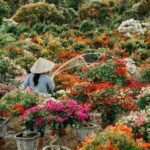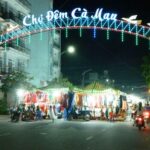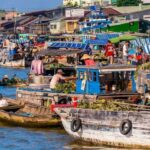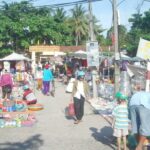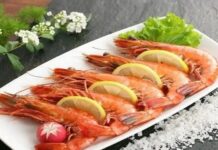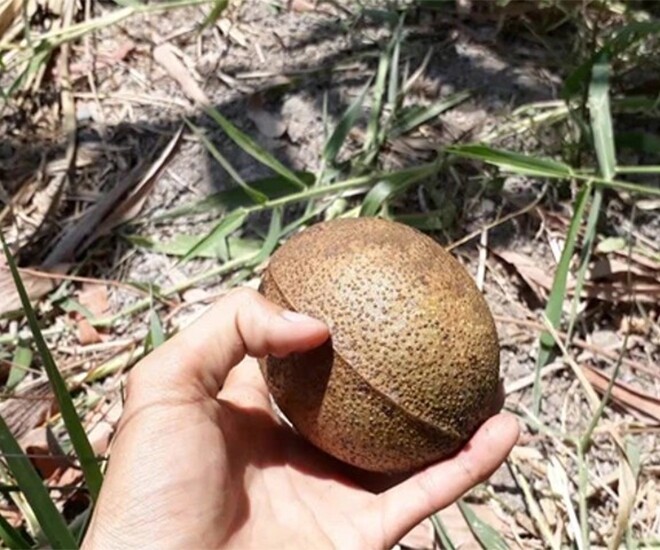
The mysterious Cam fruit of the Mekong Delta
Hidden among the sparse forests and waterways of Vietnam’s Mekong Delta, the Cam fruit was once an obscure, overlooked treat, often left to rot under the trees. In recent years, however, this humble fruit has become a sought-after delicacy in urban areas, prized for its unique sweet fragrance and delectable taste.
Botanically known as Parinari Annamensis, the Cam tree belongs to the Malpighiales order. It thrives in evergreen broadleaf forests, typically below an elevation of 800 meters, favoring sandy loam or moist rocky soils. In Vietnam, it is predominantly found in the Mekong Delta and the Cuu Long River Basin, with additional populations in Laos, Thailand, and Cambodia.
The Cam tree is a medium to large-sized tree, reaching heights of 15-30 meters with a trunk diameter of up to 60cm. Its flowers bloom in clusters at the top of the tree, covered in soft, pale yellow hairs and emitting a subtle, pleasant aroma.
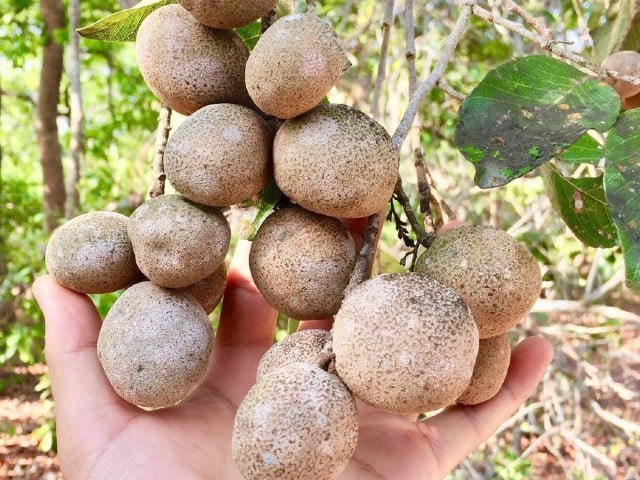
The Cam fruit has a unique fish-shaped pulp with an intriguing taste.
The Cam fruit is oval to round in shape, measuring approximately 4x3cm. Its exterior is rough and thick, covered in tiny, silvery-gray scales. The inner pulp resembles a small fish, earning it the nickname “fish fruit” in some regions.
The Cam fruit reaches its peak ripeness between the 10th lunar month and the end of the Tet holiday. As it matures, its shell transforms into a glossy brown-yellow hue, exuding a distinctive, sweet fragrance. Older trees bear an abundance of fruit, weighing down their lofty branches.
Beyond its delectable taste, the Cam fruit offers a multitude of uses. Its pulp can be infused in liquor, resulting in a distinctively flavored wine often served during ceremonies or offered to esteemed guests. When unripe, the fruit can be sliced, dried, and used as a remedy for diarrhea and digestive issues. The seeds are also a rich source of oil, which can be extracted for soap and skincare product manufacturing. The flowers of the Cam tree are equally remarkable, likened to forest orchids for their gentle, sweet scent.
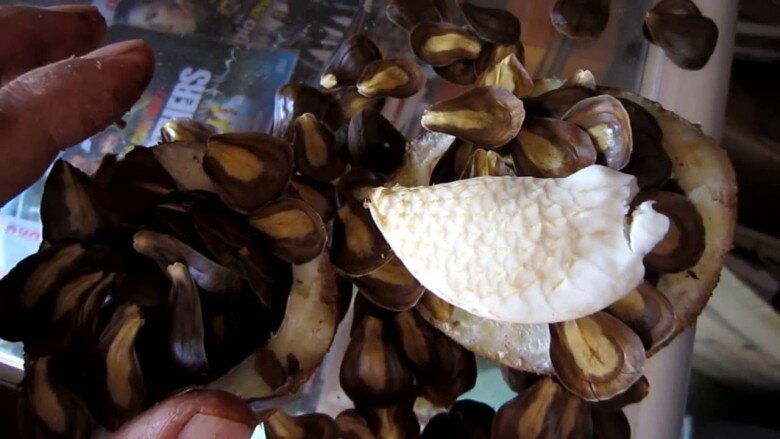
In addition to being consumed fresh, the Cam fruit can be used to make infused liquor.
Ms. Loan, a resident of Tra Vinh, reminisces, “In the past, Cam fruits were so abundant in the forests that no one bothered to pick them. But nowadays, they’ve become a rarity. Finding a ripe fruit on the ground feels like striking gold because its aroma and sweetness are unlike any other fruit out there.”
On e-commerce platforms and online markets, the Cam fruit is occasionally offered for sale, fetching prices ranging from 60,000 to 100,000 VND per kilogram. Despite its limited availability, it remains a sought-after commodity due to its uniqueness and nostalgic value.
Recently, there has been a growing interest in cultivating Cam trees at home. These trees are relatively easy to grow and care for, thriving in pots or small gardens. Cam trees grow naturally without the need for chemical fertilizers and provide shade, delicious fruit, and natural, nutrient-rich produce.
The Only Floating Market in An Giang: Once a Bustling Hub, Now Quiet Despite Tourist Influx
The Long Xuyen Floating Market is a vibrant and bustling hub located just 2km from the city center. It is a beloved icon of the region, steeped in the rich cultural heritage of the Mekong Delta. This lively market is a testament to the unique and vibrant spirit of Southern Vietnam, offering a glimpse into the traditional way of life along the majestic Mekong River.
The Ultimate Guide to Ca Mau’s Night Markets: A Shopper’s Paradise
The Ca Mau Night Market is a vibrant hub, offering a unique blend of commerce and culture. It serves as a bustling intersection where tradition meets modernity and land connects with waterways. This market is more than just a place for trading goods; it is a lively cultural space that captivates visitors with its enchanting blend of the familiar and the contemporary.
The Market: A Ca Mau Pride, a Magnet for Foreigners Thanks to Its Unique Culture
The Nam Can Floating Market in Ca Mau is a captivating destination for those eager to explore the unique cultural charm of the Mekong Delta. This vibrant market offers a glimpse into the bustling life of the locals, with hundreds of boats laden with regional produce, delectable specialties, and a distinctive “floating market” trading experience. Immerse yourself in the lively atmosphere, indulge in the aromatic delights, and uncover the captivating traditions of this enchanting corner of Southern Vietnam.
The Eccentric and Unusual Vĩnh Long Market: From a “Mistake” to a Bustling Bazaar with Hundreds of Products
The Quoi An floating market in Vinh Long province is a unique cultural and commercial hub, coming alive every Tuesday morning. This vibrant marketplace, nestled in the heart of the Mekong Delta, seamlessly blends the charm of a traditional floating market with the practicality of a land-based one. It stands out as a distinctive destination, offering a fascinating glimpse into the region’s rich heritage and vibrant trade.


























